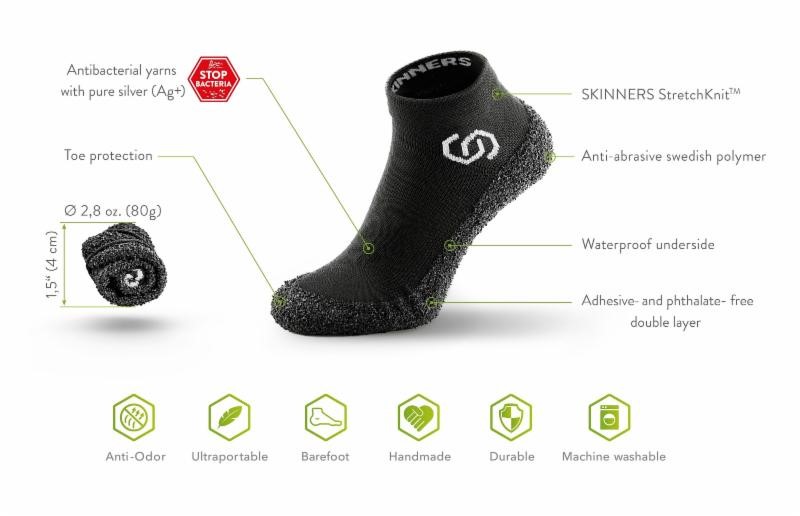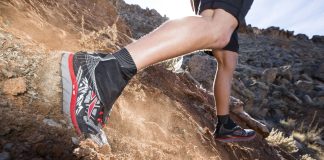Skinners Technologies has developed what the company calls “a completely new type of footwear designed for travel and sports enthusiasts.” The patented minimal shape combines the comfort of socks with the essential protection of a shoe, creating the feel of a “second skin,” said Skinners.
Designed as primary footwear for countless activities, either outdoor or indoor, Skinners also serve as a cozy camp slipper or après-hike shoe. They could be used for heading to the gym, running to the market, resting on a transatlantic flight, or water use for SUP, surf, beachgoers and anglers.
TheThe shoe sock consists of seamless antibacterial StretchKnit with a thin, yet resistant underside coated with anti-abrasion Swedish polymers. Despite its 2mm thickness, each pair is engineered to last approximately 650 km (400 miles) and stand up to being laundered in the washing machine. They are manufactured in the Czech Republic using a patented waste-free technology, said Skinners.
Skinners ultraportable shoe socks are the recipient of the prestigious Red Dot Design Award. Out of 5,500 projects, a jury of 39 professionals granted Skinners one of the major awards for innovative design, high quality and functional properties.

“We wanted to create footwear that is compact, comfortable and protective at the same time a kind of a Swiss Army knife among shoes — footwear you can literally put in the pocket and use when needed,” explained Petr Prochazka, the inventor of Skinners and CEO of Skinners Technologies. “Wearing Skinners also thoroughly activates your feet muscles and tendons, leading to more effective training.”
The sock shoes are not here to replace specialized footwear, said Prochazka, but to compensate what the feet lost by frequent use of it. “We’re not saying runners should throw away their $150 shoes and start running in Skinners once and for all. Skinners are meant to be used occasionally as a training tool on soft surfaces to better understand how the body works and to increase proprioception,” continued Prochazka.







